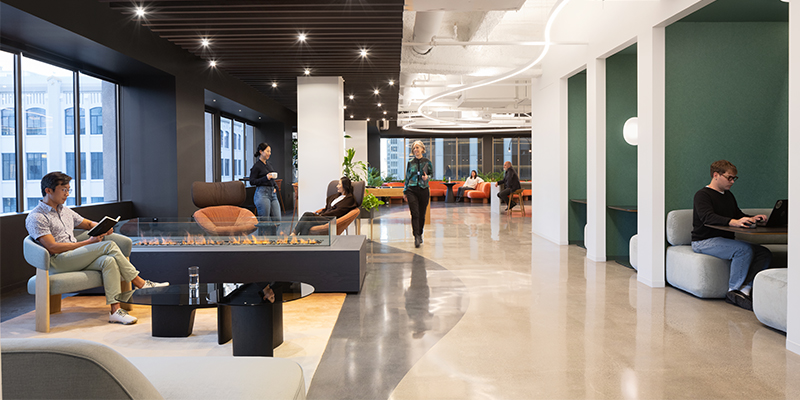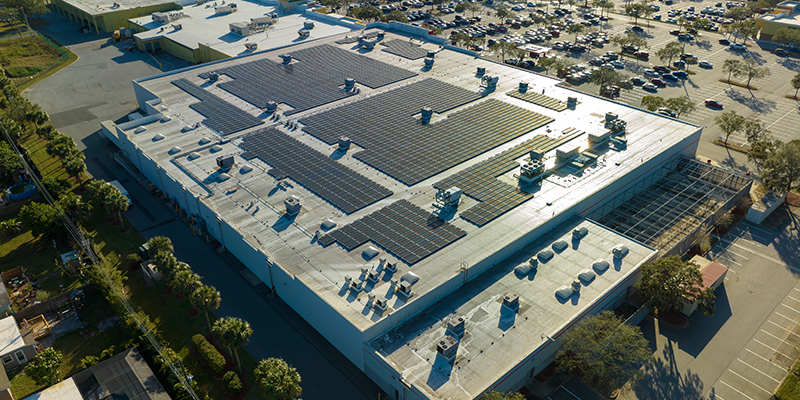By Logan Nagel
On the list of industrial investment markets receiving widespread media coverage, many names are familiar: Nashville, Tennessee; Boise, Idaho; and the high-growth Sun Belt cities. There’s another real estate market experiencing exceptional growth that might be flying under your radar: Columbus, Ohio. This central Ohio city presents a tantalizing demographic picture: almost 1 million residents, strong population growth, and nearly 40% of residents holding at least a bachelor’s degree. Plus, its central location near other major population centers like Indianapolis, Cincinnati, Cleveland and Pittsburgh is attractive to workers with families throughout the entire Midwest.
The capital, and most populous city of Ohio, dodged the worst of the Great Recession thanks to its diverse economy, and today benefits from robust economic drivers ranging from tech to manufacturing to logistics. In fact, the city will host NAIOP’s I.CON Central industrial real estate conference in November.
So what sets Columbus apart from an investment perspective? Several high-profile projects have recently come to the area, most notably a massive new plant for Intel and a lithium-ion battery factory for Honda and LG. The Intel project’s $20 billion Phase 1 was spurred by the award of $1.5 billion in federal funding through the CHIPS Act. The plant is expected to be operational in 2030 and to employ around 3,000 people in permanent roles. The project is in nearby New Albany, a small but growing suburb with a population of around 11,000 but a median income over $200,000. Intel’s impact will be so massive that the area has been given a new moniker: Silicon Heartland. That’s also the title of a 2023 book focusing on the economic transition of formerly “Rust Belt” cities. The name seems even more appropriate when considering the construction of a Honda/LG electric vehicle battery plant in Fayette County, Ohio, to the southwest of Columbus. This project is expected to begin production in late 2025 and to employ 2,200 permanent workers.
One big reason Columbus is attracting so much investment is the city’s positive approach toward growth at both the local and state level. According to Michael Copella, senior managing director for CBRE’s Eastern Midwest region and a member of NAIOP Central Ohio, that approach starts with the economic development corporation JobsOhio, which is responsible for creating nearly 146,000 new jobs since 2019. “I don’t think that we have some of the challenges faced by other states that have to run all their economic development through a state legislative process. Because we are privatized and we can partner publicly, it gives us this tremendous advantage,” he said.
Another trump card for the city is The Ohio State University. Whereas many of the major Midwestern research universities are in smaller cities, OSU’s presence in Ohio’s biggest city means business and industry in the city benefit from a strong local talent pipeline and plenty of research firepower. The addition of Drive Capital, the multibillion-dollar venture capital firm that is one of the Midwest’s largest, creates a very attractive landscape for tech companies.
With these mega-projects already underway, where’s the investment opportunity right now?
According to Collin Fitzgerald, research manager at Colliers in Columbus and a member of NAIOP Central Ohio, a compelling opportunity lies in the meeting point between technology and manufacturing. “Columbus is becoming a very big data center market, but it’s always been a manufacturing market as well,” he said. But getting data center projects on the ground comes with more barriers than just building a warehouse or light industrial space. “Data centers are on a five-year waiting list to get power,” Fitzgerald said.
As an investment destination, Columbus is likely to stay an attractive option well into the future. According to Copella, retail and multifamily are both undersupplied given current levels of demand. “What we’re hearing from some of our institutional clients, specifically industrial and multifamily, is that Columbus is now a primary market,” he said. The region is expected to hit 3 million residents by 2050.
This is the backdrop for which NAIOP’s I.CON Central industrial real estate conference will take place Nov. 3-4. The new event – introduced due to popular demand – will allow attendees to gain high-level insights into the trends driving development and investment in this dynamic region and across North America. Register today!








